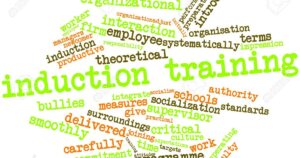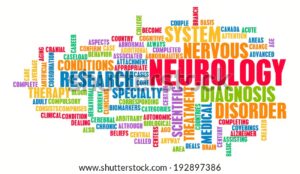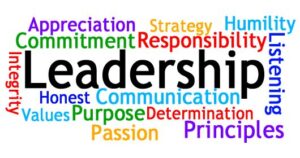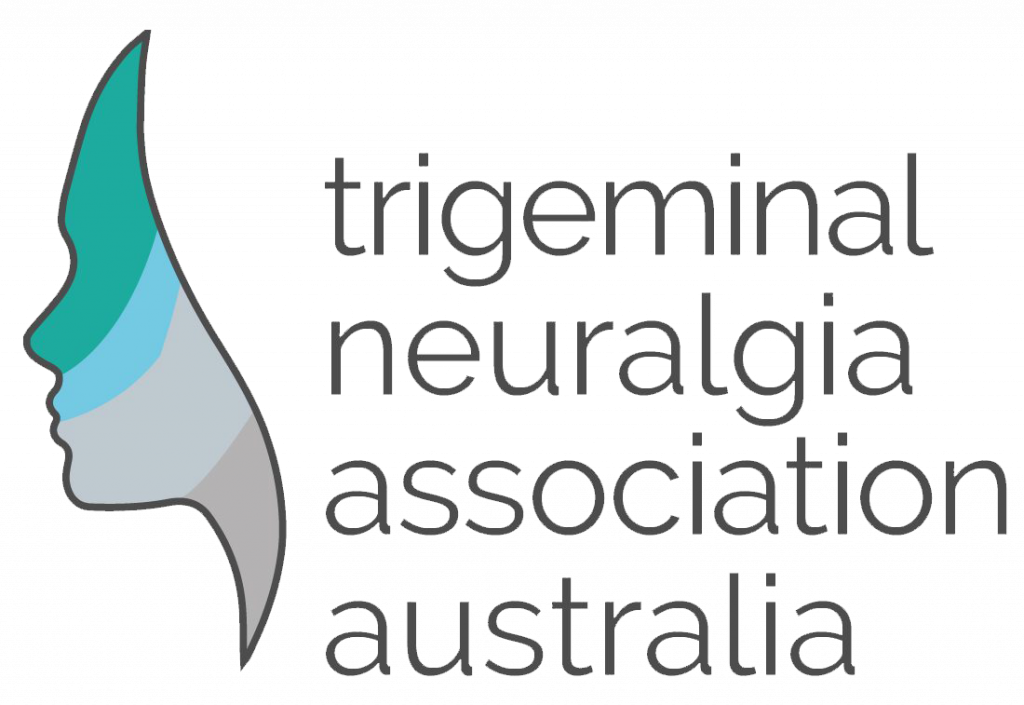Click Here to watch “You are Not Alone” Animation
Trigeminal Neuralgia Association Australia is committed to ensuring all of our volunteers have access to quality training resources to ensure they provide relevant education and information to sufferers
- We aim to ensure all Volunteers understand our organisation’s strategic development, and training is aligning with the organisation’s strategic aims and incorporated into its evaluation framework.
- We understand that effective Volunteer involvement requires organisational leadership, and a culture and structure that supports and values the role of volunteers – we ensure all volunteers have access to a mentor or educator.
- We acknowledge that Volunteers have rights, which include the right to work in a safe and supportive environment with appropriate infrastructure and effective management practices – and have access to committee members to raise concerns.
- After completion of training, Volunteers have responsibilities, which include acting responsibly, being accountable for their actions to the organisation, and respecting the organisation’s values and practices.
Our Association belongs to the National Volunteering Framework and we are working towards implementing the required volunteering national framework and standards which can be read using the link below:
The National Standards for Volunteering Involvement - 2015
[su_divider top=”no” divider_color=”#1dab9f” size=”5″ margin=”10]Support Group Leader Reports and Resources
[su_divider top=”no” divider_color=”#1dab9f” size=”5″ margin=”10] We are pleased to add Support Leader Meeting Reports HereTNAA Attendance Register
Website Training
TNAA Melbourne Volunteer Workshop PresentationVolunteer Induction
[su_divider top=”no” divider_color=”#1dab9f” size=”5″ margin=”10]
| Lesson 1 | Introduction to the history of the association – Please read the About Us section of our website. |
| Lesson 2 | Organisational Chart |
| Lesson 3 | Please read the article and watch the webinar – click on link below. Webinar – What We have been doing 2022 |
| Lesson 4 | Please complete the below survey to help us support you in your volunteering journey. |
| Lesson 5 | Website Overview, including Membership, Product, Events and Articles
It is important to us that you can navigate our website and help others use our great resources. |
| Lesson 6 | Role descriptions and responsibility TNAA Induction SGL Role |
| Lesson 7 | Harassment Policy TNAA Harassment Policy 2023 |
| Lesson 8 | Trigeminal Neuralgia Association Australia Constitution – please read TNAA Updated Constitution 2023 |
| Volunteer Induction Completion Form | Please complete the induction acknowledgement form.
[su_spoiler title=”complete form” open=”no” style=”default” icon=”plus” anchor=”” anchor_in_url=”no” class=””] |
| Volunteer Induction Feedback Form | Please complete the induction feedback form.
[su_spoiler title=”complete form” open=”no” style=”default” icon=”plus” anchor=”” anchor_in_url=”no” class=””] |
| Information Resource 1 |
Standard 5: Support and developmentVolunteers understand their roles and gain the knowledge, skills and feedback needed to safely and effectively carry out their duties. |
| Information Resource 2 |
Standard 8: Quality management and continuous improvementEffective volunteer involvement results from a system of good practice, review and continuous improvement. |
| Information Resource 3 |
Section 1 – The Trigeminal Nerve
[su_divider top=”no” divider_color=”#1dab9f” size=”5″ margin=”10]
| Lesson 1 | SGL Training Lesson 1 - What is Trigeminal Neuralgia |
| Quiz 1 | [su_spoiler title=”take quiz” open=”no” style=”default” icon=”plus” anchor=”” anchor_in_url=”no” class=””] |
| Lesson 2 | SGL Training Lesson 2 - What is the Trigeminal Nerve |
| Quiz 2 | [su_spoiler title=”take quiz” open=”no” style=”default” icon=”plus” anchor=”” anchor_in_url=”no” class=””] |
| Lesson 3 | SGL Training Lesson 3 - What is Facial Pain |
| Quiz 3 | [su_spoiler title=”take quiz” open=”no” style=”default” icon=”plus” anchor=”” anchor_in_url=”no” class=””] |
| Lesson 4 | Please click the link below – and watch Video 001
001 – Trigeminal Neuralgia Biological Explanation 5MinuteSchool |
| Quiz 4 | [su_spoiler title=”take quiz” open=”no” style=”default” icon=”plus” anchor=”” anchor_in_url=”no” class=””] |
| Lesson 5 | SGL Training Lesson 5 - Trigeminal Neuralgia Diagnosis |
| Quiz 5 | [su_spoiler title=”take quiz” open=”no” style=”default” icon=”plus” anchor=”” anchor_in_url=”no” class=””] |
| Lesson 6 | SGL Training Lesson 6 - Causes of Facial Pain |
| Quiz 6 | [su_spoiler title=”take quiz” open=”no” style=”default” icon=”plus” anchor=”” anchor_in_url=”no” class=””] |
| Lesson 7 |
|
| Quiz 7 | [su_spoiler title=”take quiz” open=”no” style=”default” icon=”plus” anchor=”” anchor_in_url=”no” class=””]To be created as a formidable form multi choice questionaire[/su_spoiler] |
| Feedback 1 | [su_spoiler title=”Section Feedback” open=”no” style=”default” icon=”plus” anchor=”” anchor_in_url=”no” class=””] |
| Information Resource 1 | SGL Help Sheet 1 - A Diagnosis of Facial Pain |
| Information Resource 2 |
SGL Help Sheet 2 - Diagnosis Video Presentation
shows the details of the video
Please click link below – and watch Video 005 005 – YouTube Diagnosis of Trigeminal Neuralgia – Top Doctors UK – Mr Jeremy Rowe interview |
| Information Resource 3 |
SGL Help Sheet 3 - Pain Video Presentation
shows the details of the video
Please click link below – and watch Video 006 006 – YouTube Trigeminal Neuralgia: Not Just Facial Pain – Dr.Jennifer Robblee |
Section 2 – Trigeminal Neuralgia Treatments
[su_divider top=”no” divider_color=”#1dab9f” size=”5″ margin=”10]
| Lesson 1 | SGL Training - Section2 - Lesson 1 - Medication - Anti Epileptics |
| Quiz 1 | [su_spoiler title=”take quiz” open=”no” style=”default” icon=”plus” anchor=”” anchor_in_url=”no” class=””] |
| Lesson 2 | SGL Training - Section2 - Lesson 2 - Medication - Anti Depressants |
| Quiz 2 | [su_spoiler title=”take quiz” open=”no” style=”default” icon=”plus” anchor=”” anchor_in_url=”no” class=””] |
| Lesson 3 | SGL Training - Section2 - Lesson 3 - Medication - Opioids |
| Quiz 3 | [su_spoiler title=”take quiz” open=”no” style=”default” icon=”plus” anchor=”” anchor_in_url=”no” class=””] |
| Lesson 4 | SGL Training - Section2 - Lesson 4 - Medication - Other |
| Quiz 4 | [su_spoiler title=”take quiz” open=”no” style=”default” icon=”plus” anchor=”” anchor_in_url=”no” class=””] |
| Lesson 5 | SGL Training - Section2 - Lesson 5 - Surgery Options |
| Quiz 5 | [su_spoiler title=”take quiz” open=”no” style=”default” icon=”plus” anchor=”” anchor_in_url=”no” class=””] |
| Lesson 6 | Please click link below – and watch Video 004
004 – TNA Australia Webinar – Dr Ben Jonker “Which Treatment Should I Have For Trigeminal Neuralgia” |
| Quiz 6 | [su_spoiler title=”take quiz” open=”no” style=”default” icon=”plus” anchor=”” anchor_in_url=”no” class=””] |
| Lesson 7 | Further lessons may be added in the future |
| Quiz 7 | [su_spoiler title=”take quiz” open=”no” style=”default” icon=”plus” anchor=”” anchor_in_url=”no” class=””]To be created as a formidable form multi choice questionaire[/su_spoiler] |
| Feedback 2 | [su_spoiler title=”Section Feedback” open=”no” style=”default” icon=”plus” anchor=”” anchor_in_url=”no” class=””] |
| Information Resource 1 | SGL Help Sheet 2-1 B12 as a Treatment for Peripheral Neuropathic Pain |
| Information Resource 2 | SGL Help Sheet 2-2 Medication Summary |
| Information Resource 3 | Repeat Gamma Knife surgery for recurrent trigeminal neuralgia: long-term outcomes and systematic review – PubMed (nih.gov) |
| Information Resource 4 |
SGL Help Sheet 2 -4 Rules & Regulations for Prescribing Pain Relief in Australia
Issued by Australian Pain Management Association |
Section 3 – Pain Management and Quality of Life
[su_divider top=”no” divider_color=”#1dab9f” size=”5″ margin=”10]
| Lesson 1 | Complimentary Medicine - Part 1 |
| Quiz 1 | [su_spoiler title=”take quiz” open=”no” style=”default” icon=”plus” anchor=”” anchor_in_url=”no” class=””] |
| Lesson 2 | Complementary Medicine - Part 2 |
| Quiz 2 | [su_spoiler title=”take quiz” open=”no” style=”default” icon=”plus” anchor=”” anchor_in_url=”no” class=””] |
| Lesson 3 | Meditation for Chronic Pain |
| Quiz 3 | [su_spoiler title=”take quiz” open=”no” style=”default” icon=”plus” anchor=”” anchor_in_url=”no” class=””] |
| Lesson 4 | How to Cope When Chronic Pain Causes Anxiety |
| Quiz 4 | [su_spoiler title=”take quiz” open=”no” style=”default” icon=”plus” anchor=”” anchor_in_url=”no” class=””] |
| Lesson 5 | Living Well Despite Chronic Pain |
| Quiz 5 | [su_spoiler title=”take quiz” open=”no” style=”default” icon=”plus” anchor=”” anchor_in_url=”no” class=””] |
| Lesson 6 | Please click link below – and watch Video 011 011 – Struggling to Be Me in Chronic Pain |
| Quiz 6 | [su_spoiler title=”take quiz” open=”no” style=”default” icon=”plus” anchor=”” anchor_in_url=”no” class=””] |
| Lesson 7 | Further lessons may be added in the future |
| Quiz 7 | [su_spoiler title=”take quiz” open=”no” style=”default” icon=”plus” anchor=”” anchor_in_url=”no” class=””]To be created as a formidable form multi choice questionaire[/su_spoiler] |
| Feedback 3 | [su_spoiler title=”Section Feedback” open=”no” style=”default” icon=”plus” anchor=”” anchor_in_url=”no” class=””] |
| Information Resource 1 | SGL Help Sheet Section 3 - 1 Coping with Pain Flares |
| Information Resource 2 | SGL Help Sheet 3-2 Self Managing Chronic Pain |
| Information Resource 3 | SGL Help Sheet 3-3 Overview of Complementary Health Approaches - Facial Pain Association |
| Information Resource 4 | SGL Help Sheet 3-4 Pain perception can be modulated by mindfulness |
| Information Resource 5/6 | SGL Help Link 3-5 12 tips to Pacing for Chronic Pain SGL Help Sheet 3-6 Helpful Links to Pain Management Articles |
Section 4 – Support Leader Responsibility
[su_divider top=”no” divider_color=”#1dab9f” size=”5″ margin=”10]
| Resource 1 – Running a Support Group | The downloads provided here have been created by the QLD Government and can be utilised by Support Group Leaders as high level action prompts |
| Feedback 1 | [su_spoiler title=”complete feedback” open=”no” style=”default” icon=”plus” anchor=”” anchor_in_url=”no” class=””] |
| Resource 2 – Support Group Governance | These resources have been created by the Victorian State Government to assist in understanding governance requirement |
| Feedback 2 | [su_spoiler title=”complete feedback” open=”no” style=”default” icon=”plus” anchor=”” anchor_in_url=”no” class=””] |
| Resources 3 – Public Speaking | Public Speaking is a skill and no matter what size of audience you are addressing, it is good to understand the process and practise often. Please click on the link below to get a better understanding how to be a better presenter |
| Feedback 3 | [su_spoiler title=”complete feedback” open=”no” style=”default” icon=”plus” anchor=”” anchor_in_url=”no” class=””] |
| Resource 4 – Peer Mentors | Peer Mentors information has been provided by the FPA and we thank them for their assistance in providing a framework for our training resources
[su_spoiler title=”This form can be used to record a contact with a sufferer” open=”no” style=”default” icon=”plus” anchor=”” anchor_in_url=”no” class=””] |
| Feedback 4 | [su_spoiler title=”complete feedback” open=”no” style=”default” icon=”plus” anchor=”” anchor_in_url=”no” class=””] |
| Resource 5 – Support Groups | This information provides details of things to consider when setting up and manging support groups and we thank the FPA for providing us with a framework to produce this document
[su_spoiler title=”This form can be used to record a contact with a sufferer” open=”no” style=”default” icon=”plus” anchor=”” anchor_in_url=”no” class=””] |
| Feedback 5 | [su_spoiler title=”complete feedback” open=”no” style=”default” icon=”plus” anchor=”” anchor_in_url=”no” class=””] |
| Resource 6 – Recruitment | Recruitment of volunteers is essential for the growth of not for profit organisations. The below resources cover this aspect
The below link provides a 30 minute e-learning module about how to safely recruit volunteers provided by Justice Connect Recruiting Volunteers: Justice Connect E-Learning Module – Overview (nfplaw.org.au) |
| Feedback 6 | [su_spoiler title=”complete feedback” open=”no” style=”default” icon=”plus” anchor=”” anchor_in_url=”no” class=””] |
| Resource 7 – Advertising | Consumer law covers charities and not for profit organisations. The download provides the legal framework to be complied with when advertising charity events and fpr all internal and external communication |
| Feedback 7 | [su_spoiler title=”complete feedback” open=”no” style=”default” icon=”plus” anchor=”” anchor_in_url=”no” class=””] |
| Resource 8 – Fundraising | All not for profit charities need to raise funds to support the advocacy work they do. Generally resources are scarce both in people and funds. The below guide has been published by Aplos.com which is a software company SGL Training Section 4-8 Fundraising The below guide by software company “donorbox”, however the questions and structure to be considered can be replicated in a manual way |
| Feedback 8 | [su_spoiler title=”complete feedback” open=”no” style=”default” icon=”plus” anchor=”” anchor_in_url=”no” class=””] |
| Information Resource 1 | Please watch the following video which will help give pointers to sufferers how they should approach their medical team |
| Information Resource 2 | This sheet provides an overview about understanding pain and it’s effect in life
Explain Your Pain
The following link provides some insight from Beyond Blue around framing conversations for sufferers in crisis |
Section 5 – Committee Member Training
[su_divider top=”no” divider_color=”#1dab9f” size=”5″ margin=”10]
| Course 1 | https://www.futurelearn.com/courses/becoming-a-charity-member-what-you-should-know
ACNC free courses to assist your understanding of responsibilities when becoming a Committee Member to a Charity
|
| Feedback 1 | [su_spoiler title=”provide feedback” open=”no” style=”default” icon=”plus” anchor=”” anchor_in_url=”no” class=””]To be created as a feedback form[/su_spoiler] |
| Course 2 | Governing a Registered Charity in Australia – Online Course – FutureLearn
ACNC free courses to assist your understanding of responsibilities wh3n Governing a Registered Charity
|
| Feedback 2 | [su_spoiler title=”provide feedback” open=”no” style=”default” icon=”plus” anchor=”” anchor_in_url=”no” class=””]To be created as a formidable feedback form [/su_spoiler] |
| Resource 3 | All charity based organisations need to cover a huge area of knowledge to enable expansion and growth. In order to achieve the goals, the committees must be aware of what steps can be taken, but it would be a huge drain on volunteers time to understand every area. Our committee members have skills in Business Management, Administration Management, Education, Project Management, Systems Analysis, Finance and Data Analysis. The Toolkit below is a wonderful resource to provide guidance and and a reinforcement of knowledge, already within the committee
The below free resource covers planning, strategies, implementation, policies, grants, leadership, change management, marketing and much more Table of Contents | Community Tool Box (ku.edu) Toolkits | Community Tool Box (ku.edu) The Community Tool Box is a service of the Center for Community Health and Development at the University of Kansas. About | Community Tool Box (ku.edu) |
| Feedback 3 | [su_spoiler title=”provide feedback” open=”no” style=”default” icon=”plus” anchor=”” anchor_in_url=”no” class=””]To be created as a formidable feedback form[/su_spoiler] |
| Lesson 4 | Strategy is a key component of any organisation which enables growth, delivery and member satisfaction. In the below link you will find short videos delivered by leaders in various companies
This is a great resource to understand what strategy can mean for various organisations and provide guidance in creating our own strategy Strategy Bootcamp - Slideshow 2022 |
| Quiz 4 | [su_spoiler title=”take quiz” open=”no” style=”default” icon=”plus” anchor=”” anchor_in_url=”no” class=””]To be created as a formidable form multi choice questionaire[/su_spoiler] |
| Lesson 5 | Leadership in any area is so important, and learning how to lead is a skill that anyone responsible for others, either in the Association Committee or within the Volunteer Framework should undertake. The following resources offer high-level topics only and are provided to raise awareness |
| Quiz 5 | [su_spoiler title=”take quiz” open=”no” style=”default” icon=”plus” anchor=”” anchor_in_url=”no” class=””]To be created as a formidable form multi choice questionaire[/su_spoiler] |
| Lesson 6 | |
| Quiz 6 | [su_spoiler title=”take quiz” open=”no” style=”default” icon=”plus” anchor=”” anchor_in_url=”no” class=””]To be created as a formidable form multi choice questionaire[/su_spoiler] |
| Lesson 7 | |
| Quiz 7 | [su_spoiler title=”take quiz” open=”no” style=”default” icon=”plus” anchor=”” anchor_in_url=”no” class=””]To be created as a formidable form multi choice questionaire[/su_spoiler] |
| Information Resource 1 | TMJ Online Course created by Orofacialpain Org UK and presented by Dr Tara Renton. The course covers three modules, Medical, Psychology and Mental Health tips and Physiotherapy exercises
https://orofacialpain.org.uk/courses/temporomandibular-joint-disorders-1/ |
| Information Resource 2 | ACNC short course for the Public Officer to learn how to provide the annual statement and other documents
https://www.futurelearn.com/courses/the-annual-information-statement |
| Information Resource 3 | Website Admin Training Videos
https://youtu.be/JhHT9Ss4j-E?si=dtxHRGYkVgCvra0e |
Section 6 – Counselling Training
[su_divider top=”no” divider_color=”#1dab9f” size=”5″ margin=”10]
| Manual 1 | “The ultimate goals of coaching are to increase self-regulation of clients and to guide them in a desired direction, a direction that results in subjective wellbeing or, using a more common term, happiness. This direction involves thoughts, beliefs and actions. Stated simply, self-regulation is the self in action aiming to experience a happy and meaningful life. However, findings in the clinical field show that effective self-regulation may not always be considered an easy task. For instance, depression rates have been 10 times higher compared to 1960 and burnout rates are increasing every year”This manual is designed to guide a counsellor through the process of supporting and assisting a client in need and should be used with Manual 2 |
| Manual 2 | “Welcome to this intervention. The upcoming sessions all share one purpose: to help you move closer to your personal goals and increase your well-being. In order to do so, we adopt a positive focus. Rather than merely focusing on what is wrong and what prevents you from reaching your goals, we will also consider your personal strengths. In this intervention, we will focus on what is most important in your life and consider all the personal qualities you already possess that will allow you to reach your personal goals and deal with challenges that may arise on your journey. This manual was created to serve as a guide throughout the coaching sessions. It was designed for several specific purposes: ▪ to offer a theoretical background and context for the phases of this intervention ▪ to help you remember the action steps and commitments that you agreed on ▪ to serve as a logbook for the most important insights that result from this intervention”This manual is designed to guide a client through the process of being supported and provides the structure based on Manual 1 |
| Manual 3 | “Developed in the early 1960s by Aaron T. Beck, cognitive-behavior therapy (CBT) is one of the most well-researched psychological treatments to date. The basic premise of CBT is that what we think, how we feel and how we behave are all closely connected (see Fig. 1.1)—and all of these factors have a decisive influence on our wellbeing.”A guide to the background of CBT |
| Manual 4 | “Even if you’re relatively unfamiliar with psychology, chances are you’ve heard of cognitive-behavioral therapy, commonly known as CBT. It’s an extremely common type of talk therapy practiced around the world. If you’ve ever interacted with a mental health therapist, a counsellor, or a psychiatry clinician in a professional setting, it’s likely you’ve participated in CBT. CBT is one of the most frequently used tools in the psychologist’s toolbox. Though it’s based on simple principles; it can have wildly positive outcomes when put into practice. In this guide, we’ll explore what CBT is, how it works, and how you can apply its principles to improve your own life or the lives of your clients.”This manual provides an understanding of how cognitive behavioural therapy is used to assist clients |
| Resource 5 | The downloads in this section are individual exercises, covering a goal, advice and a framework of questions within each worksheet, designed to encourage sufferers to focus on other things in their lives, rather than the pain they suffer. They can be used by our Support Group Leaders to really understand how to frame counselling in a positive way
|
| Resource 6 | “The question “What is wrong with people?” has guided the thinking of many psychologists and dominated countless scientific studies during the 20th century. It is hard to deny that it is an important question. In our attempts to answer the question, we have gained insight into many illnesses and have developed effective treatments for a wide range of problems. However, focusing on disease and deficit has limited our understanding and knowledgebase to pathology, and as a consequence, we have devoted relatively little attention to factors that make life worth living.”This section includes an Introduction to Resilience and Coping exercises and work sheets covering the subject introduction, goal and advice
|
| Resource 7 | |
| [su_spoiler title=”take quiz” open=”no” style=”default” icon=”plus” anchor=”” anchor_in_url=”no” class=””]To be created as a formidable form multi choice questionaire[/su_spoiler] | |
| Information Resource 1 | |
| Information Resource 2 | |
| Information Resource 3 |

